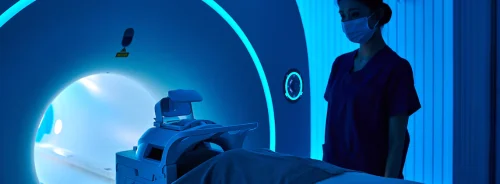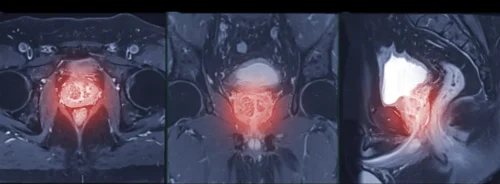Magnetic Resonance Imaging (MRI) is considered the gold standard for diagnosing lumbar spine conditions due to its sensitivity in detecting structural abnormalities. However, the challenge lies in distinguishing abnormalities causing actual pain from incidental ones. Many patients present with similar MRI findings, irrespective of their symptomatic state, making it difficult for radiologists to identify true pain generators. Integrating patient-reported symptoms into the interpretation of MRI has emerged as a promising approach to overcome this challenge, enhancing diagnostic accuracy and improving patient outcomes.
The Challenges of Lumbar Spine MRI Interpretation
One of the fundamental challenges in interpreting lumbar spine MRI results is the prevalence of structural abnormalities in asymptomatic individuals. Studies have shown that degenerative changes, such as disc herniation, stenosis and facet arthropathy, are common in the general population. This complicates the identification of actual pain generators, particularly in patients who present with symptoms. Radiologists often compile long lists of abnormalities without sufficient context to determine which findings are clinically relevant. This can lead to misinterpretation and inappropriate treatment recommendations, particularly for healthcare providers who rely solely on MRI reports without the benefit of a thorough clinical examination.
The absence of high-quality symptom information is a significant barrier for radiologists. Unlike spine specialists who have the opportunity to interact directly with patients, radiologists generally do not have comprehensive symptom data available during the interpretation of MRI scans. Consequently, their reports may lack the specificity needed to guide accurate treatment decisions. To address this, radiologists need reliable and standardised methods for accessing patient-reported symptoms that can be seamlessly integrated into their workflow.
Impact of Symptom Data Integration
In an effort to enhance the interpretation of lumbar spine MRI, a study implemented a pre-MRI symptom questionnaire within an electronic health record (EHR) system. This automated process contacted patients scheduled for lumbar spine MRI two days in advance, asking them to complete a detailed questionnaire about their symptoms. The questionnaire captured essential details, such as the location, character and intensity of pain. These results were then made immediately available to radiologists during MRI interpretation.
The impact of this integration was significant. Radiologists with access to patient-reported symptoms demonstrated a much higher level of agreement with spine specialists regarding pain generators. Specifically, there was a substantial improvement in identifying pain generators' type, level and side. The study found that radiologists’ agreement with specialists improved from fair to almost perfect, with Cohen’s kappa values ranging from 0.82 to 0.88 when symptoms were known, compared to 0.26 to 0.51 without symptom information. This improvement indicates that knowing a patient’s symptoms allowed radiologists to focus on the most relevant MRI findings, thus enhancing diagnostic accuracy and consistency.
Moreover, the inclusion of symptom information increased radiologists’ confidence in their diagnoses. The study showed that diagnostic certainty rose significantly from a mean of 60.5 to 80.4 on a scale of 0 to 100 when symptoms were known. This increase in certainty is crucial, as it suggests that radiologists were more assured of their interpretations, leading to more precise clinical recommendations and potentially better patient outcomes.
Statistical Findings and Implications
The study enrolled 240 participants and alternated between MRI interpretations with and without access to patient-reported symptoms. The results demonstrated clear statistical advantages in integrating symptom data. When symptoms were known, radiologists’ agreement with specialists on the type, level and side of pain generators was consistently higher. Diagnostic certainty improved across all certainty quartiles, indicating that the integration of symptom information benefitted both simple and complex cases. Additionally, interrater agreement, which measures consistency among different radiologists, increased substantially when symptom data were included. The implications of these findings extend beyond the radiology department, affecting treatment decisions across the spectrum of spine care.
This integration of symptom information also has practical implications for clinical practice. Providers often depend on MRI reports to make treatment decisions or referrals. For non-specialist providers, having accurate, symptom-informed MRI reports can reduce the likelihood of unnecessary interventions and optimise the patient care pathway. Furthermore, standardising the collection of symptom data through a pre-MRI questionnaire offers a systematic approach that can be easily replicated in various healthcare settings.
Integrating patient-reported symptoms in lumbar spine MRI interpretation significantly improves diagnostic accuracy and clinical decision-making. By aligning MRI findings with symptomatology, radiologists can achieve a greater level of agreement with spine specialists, increasing diagnostic certainty and enhancing patient outcomes. As this approach gains traction, it holds the potential to refine clinical pathways, minimise unnecessary procedures and optimise resource utilisation. Further research and continued implementation of such integrative methods are essential to maximising their impact on healthcare delivery.
Source: Radiology
Image Credit: iStock









